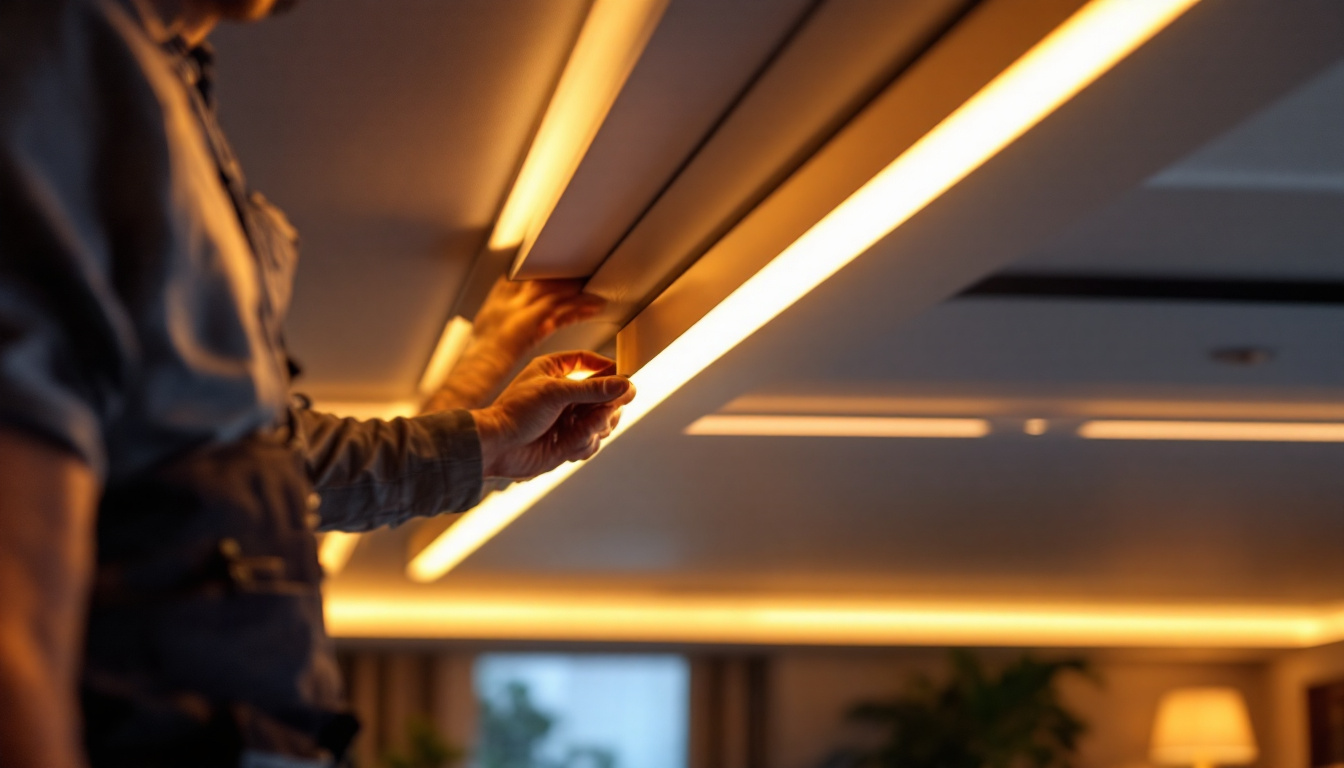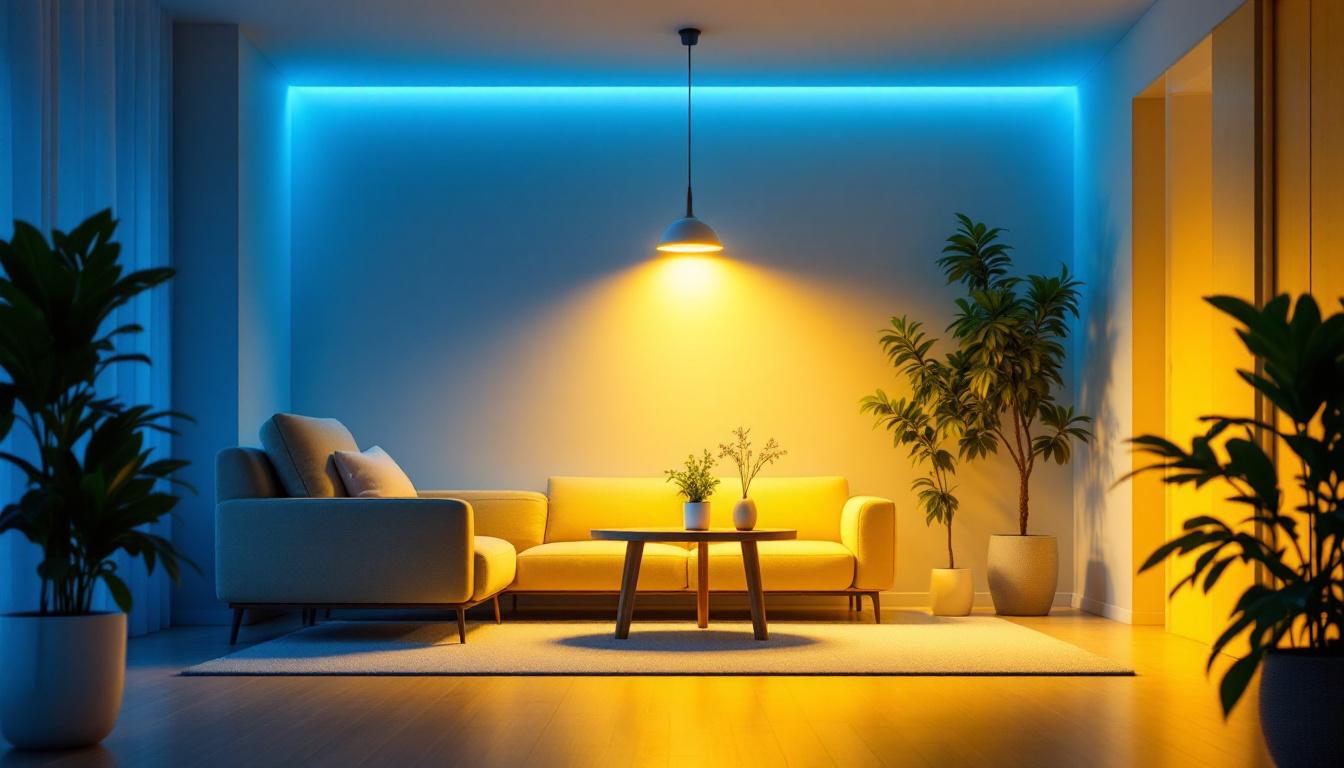
In the ever-evolving world of lighting technology, Type A bulbs have emerged as a staple in both residential and commercial settings. Understanding the nuances of these bulbs is essential for lighting contractors who aim to provide top-notch solutions to their clients. This article delves into the characteristics of Type A bulbs, their applications, and some clever hacks that can enhance the efficiency and effectiveness of lighting installations.
Type A bulbs are commonly recognized for their traditional pear-shaped design. They are typically used in standard light fixtures and are available in various wattages and color temperatures. The versatility of Type A bulbs makes them suitable for a wide range of applications, from ambient lighting in homes to task lighting in offices.
These bulbs are primarily available in incandescent, CFL (compact fluorescent lamp), and LED (light-emitting diode) technologies. Each type has its own set of advantages and drawbacks, which can impact the choice of bulb for specific lighting projects. For instance, incandescent bulbs are known for their warm light and excellent color rendering but are less energy-efficient compared to their LED counterparts. On the other hand, LED bulbs offer significant energy savings and a longer lifespan, making them a popular choice for environmentally conscious consumers.
Type A bulbs are characterized by their E26 base, which is the standard size for most household fixtures. They also come in different brightness levels, measured in lumens, allowing contractors to select the appropriate bulb based on the lighting needs of a space. Additionally, Type A bulbs are available in various color temperatures, ranging from warm white (around 2700K) to cool white (up to 5000K), providing flexibility in creating the desired ambiance. The color temperature can significantly influence the mood of a room; for example, warmer tones are often preferred for relaxation areas, while cooler tones are favored in workspaces for their ability to enhance focus and alertness.
Type A bulbs are incredibly versatile and can be used in numerous settings. In residential applications, they are often found in table lamps, ceiling fixtures, and wall sconces. Their warm glow creates a cozy atmosphere, making them a popular choice for living rooms and bedrooms. Homeowners might also choose dimmable Type A bulbs to further customize the lighting experience, allowing for softer light during movie nights or brighter illumination for reading.
In commercial environments, Type A bulbs are frequently used in office spaces, retail stores, and hospitality venues. Their ability to provide consistent and reliable lighting makes them ideal for enhancing productivity and customer experience. For instance, in a retail setting, the right Type A bulb can highlight merchandise effectively, drawing customers’ attention and encouraging purchases. Additionally, many businesses are now opting for smart Type A bulbs that can be controlled via smartphone apps, allowing for dynamic lighting changes throughout the day to match the changing needs of the space.
For lighting contractors, understanding the benefits of Type A bulbs can lead to better recommendations for clients. These bulbs offer a range of advantages that can enhance both performance and customer satisfaction.
One of the most significant benefits of Type A bulbs, particularly LED variants, is their energy efficiency. LED Type A bulbs consume significantly less energy compared to traditional incandescent bulbs, leading to lower electricity bills for clients. This energy efficiency not only benefits the environment but also aligns with the growing demand for sustainable lighting solutions.
Type A LED bulbs have a much longer lifespan than their incandescent counterparts. While traditional incandescent bulbs may last around 1,000 hours, LED Type A bulbs can last up to 25,000 hours or more. This longevity reduces the frequency of replacements, saving both time and money for clients.
As technology advances, the integration of smart lighting solutions has become increasingly popular. Type A bulbs can be seamlessly integrated into smart lighting systems, providing contractors with the opportunity to offer enhanced functionality to their clients.
Many Type A LED bulbs are compatible with smart home systems, allowing users to control their lighting through mobile apps or voice commands. This compatibility opens up a range of possibilities for creating customized lighting scenes and schedules, enhancing convenience and comfort for homeowners.
Contractors should stay informed about the latest smart lighting technologies and recommend Type A bulbs that can easily integrate with popular smart home platforms. This knowledge can set contractors apart in a competitive market.
Type A smart bulbs can be programmed for remote control and automation, allowing clients to control their lighting from anywhere. This feature is particularly beneficial for clients who travel frequently or want to enhance their home security by simulating occupancy when they are away.
By incorporating smart Type A bulbs into lighting designs, contractors can provide clients with a modern, tech-savvy solution that meets contemporary lifestyle demands.
Lighting contractors can implement several hacks to maximize the performance and efficiency of Type A bulbs in their projects. These tips can help improve the overall lighting experience while ensuring that clients receive the best value for their investment.
Selecting the appropriate color temperature for Type A bulbs is crucial in achieving the desired ambiance. For residential spaces, warmer color temperatures (2700K to 3000K) are often preferred, as they create a cozy and inviting atmosphere. In contrast, cooler temperatures (4000K to 5000K) are more suitable for workspaces and task-oriented areas, as they promote alertness and concentration.
Contractors should take the time to discuss color temperature preferences with clients to ensure that the lighting design aligns with their vision and needs.
Incorporating dimmer switches into lighting designs can significantly enhance the versatility of Type A bulbs. Dimmers allow users to adjust the brightness of their lighting, creating different moods and atmospheres depending on the time of day or occasion.
When recommending dimmers, contractors should ensure that they are compatible with the specific Type A bulbs being used. This compatibility is particularly important for LED bulbs, as not all dimmers work effectively with them.
Layering light is a technique that involves using multiple light sources to create depth and dimension in a space. By combining Type A bulbs with other types of lighting, such as recessed lights, accent lights, and task lighting, contractors can create a more dynamic and visually appealing environment.
This approach not only enhances the aesthetic appeal of a space but also improves functionality by ensuring that different areas are well-lit for their intended purposes.
While Type A bulbs are relatively straightforward to work with, there are common mistakes that lighting contractors should be aware of to ensure successful installations and satisfied clients.
One of the most frequent mistakes is overlooking the wattage and lumens when selecting Type A bulbs. Many contractors may assume that higher wattage equates to brighter light, but this is not always the case. Lumens, which measure brightness, should be the primary consideration when choosing bulbs for a specific application.
Contractors should familiarize themselves with the lumen output of different Type A bulbs and match them to the lighting needs of the space to avoid under- or over-lighting.
Another common oversight is failing to ensure that Type A bulbs are compatible with the fixtures they are intended for. Not all fixtures are designed to accommodate every type of bulb, especially when it comes to LED variants. Contractors should always verify the fixture specifications and ensure that the selected Type A bulbs fit properly and function as intended.
The lighting industry is continually evolving, and Type A bulbs are no exception. Staying informed about future trends can help contractors remain competitive and offer cutting-edge solutions to their clients.
As LED technology continues to advance, Type A LED bulbs are becoming more efficient and versatile. Innovations in energy efficiency, color rendering, and smart capabilities are expected to enhance the performance of these bulbs, making them an even more attractive option for contractors and clients alike.
Contractors should keep an eye on emerging technologies and be prepared to adapt their recommendations accordingly, ensuring that they are always offering the best solutions available.
The demand for smart lighting solutions is on the rise, and Type A bulbs are well-positioned to meet this need. As more homeowners and businesses seek to integrate smart technology into their lighting systems, contractors should be ready to provide expertise and guidance on the best Type A smart bulbs available.
By embracing this trend, contractors can enhance their service offerings and appeal to a broader client base.
Type A bulbs are a fundamental component of modern lighting design, offering versatility, efficiency, and compatibility with smart technologies. For lighting contractors, understanding the characteristics, benefits, and potential applications of these bulbs is crucial for delivering exceptional service to clients.
By implementing hacks to maximize performance, avoiding common mistakes, and staying informed about future trends, contractors can position themselves as experts in the field and elevate their business to new heights. The world of lighting is constantly changing, and embracing these innovations will ensure that contractors remain at the forefront of the industry.
Ready to elevate your lighting projects with the best Type A bulbs on the market? Look no further than LumenWholesale, where we specialize in providing contractors with superior, spec-grade lighting solutions at unbeatable wholesale prices. Our commitment to quality and affordability means you can access a wide range of high-performance lighting without the middleman markups. Plus, with free shipping on bulk orders, you can stock up on all the lighting essentials you need without worrying about hidden fees. Make the smart choice for your business and explore our collection of wholesale lighting at the best value today.

Explore the essential insights into shop lights that every lighting contractor should know.

Discover how lighting contractors can elevate their projects with LED ceiling light strips.

Explore the advantages and drawbacks of retrofitting LED lights for lighting contractors.

Discover the secrets to maximizing efficiency with Type S LED lights in your home or office.